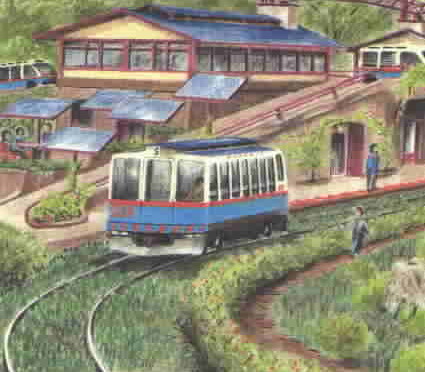Marin Voice, Marin Independent Journal
Published May 15, 2001 (unedited version)
DWAYNE HUNN
Recently strategy/economic consultant Stephen Roulac spoke on Marin’s Economic Future to a Marin Community Development hosted public gathering. He concluded that Marin’s # 1 priority must be bringing back rail. Then the IJ editorialized about the need not to forget the train as a means to address Marin’s land use instigated traffic mess. Then the Chronicle published a Texas Transportation Institute study listing San Francisco-Qakland commute as the 2nd worst in the nation and stated, “cities will have to judiciously invest in new roads, public transit, affordable housing along transit corridors…”
Several years ago local government commissioned a Calthorpe Associates Study that concluded Marin and Sonoma needed and can justify a train. Fifteen years ago Peter Calthorpe and I did local radio shows trying to educate people on the benefits of building European style communities along the large parcels adjacent to the existing rail line. These villages would more effectively address affordable housing, traffic, resource conservation, and open space then would downzoning developments into auto-dependent suburban sprawl communities. Peter gave up on Marin. He moved his home and office to Berkeley where he designs projects through out the nation for developers and cities concerned about using the earth’s limited resources efficiently.
For decades, environmentalists world-wide have pushed for increased train and mass transit use to address air quality, resource conservation, and cargo and travel costs.
Back in Marin a handful of people continue controlling groups with environmental nametags who oppose the train, fight housing projects for decades and downzone them into mega-costly suburban sprawl, building resource devouring, auto-dependent exclusive enclaves.
Where did Marin lose its definition of enviromentalism? It lost it when working people allowed the county’s policy decisions to be dominated by a handful of people with myopic environmental views. Consequently, too often Marin has a NIMBYized (Not In My Backyard) definition for environmentalism. Marin lost a true environmental perspective when elected officials a decade ago would say to me, “Oh, but I can’t support pedestrian pockets along the rail line, my constituents won’t vote for it.”
Responding, “Well, gee, isn’t one of your responsibilities as a public official to educate the community on what might be in their long term best interests,” didn’t help. Well, today we suffer the consequences of that short sightedness in California’s oldest median aged county with gridlock, high labor costs, outrageously priced housing and crowded rentals for our hard working, imported workers.
What’s part of the answer? Involvement by people yearning for more housing who, unfortunately, are stuck wasting hours in gridlock while working a couple jobs and trying to raise a family. Also needed is leadership, guts, and common sense foresight from elected officials as well as planners and media makers on land use issues.
How government officials force developers to use the land determines how the people who eventually live on it must get around. St Vincent’s Silveira is Marin’s largest remaining developable piece of land, and it has a rail line running through it that can connect to Sonoma, Sacramento and Tahoe. Environmentally conscious, far sighted, regionally concerned leadership would make sure that land was used to design a large, oriented to the train, mixed-use development.
What do policy makers continue to hear from the leadership of many of Marin’s s self described environmental groups on St. Vincent’s Silveira? 1) No development. 2) No train stop. In fact, some of Marin’s misnamed environmentalists got the Marin Supervisors to put a Memorandum of Understanding into the two year St. Vincent Silveira Task Force Study to expressly remove the historical train stop from the site’s existing tracks.
Of course, governmental leaders can take these Task Force suggestions and make them better. For the long-term benefit of the region – and by reverberation – the world, Marin should change the Task Force’s narrow parameters and help developers do smart land uses on the few big sites remaining. Smart land uses helps true environmentalists get away from auto-dependently polluting our sky’s lovely birds and the people who share the same air.
Dwayne Hunn provides solar photovoltaic net-metering systems for homeowners and businesses and rides his bike to the rail road tracks to throw stones at the weeds covering the ties over which trains used to glide.


